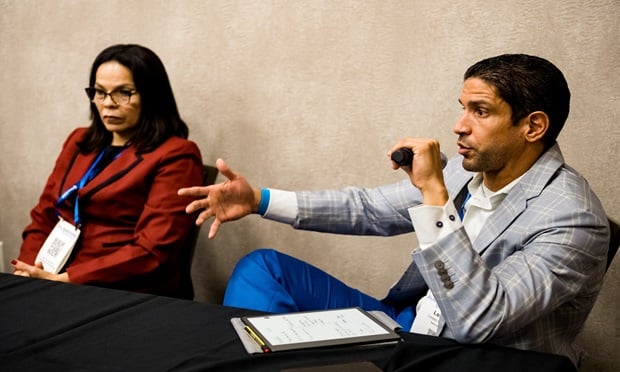In November, the U.S. Department of Labor proposed new rulesthat states have been awaiting, to move forward in adoptingmandatory state-sponsored retirement plans forprivate businesses.
|The rules will create a safe harbor from ERISA fiduciaryrequirements for complying plans.
|They also will open floodgates for these plans to launch,starting as soon as next year.
|California, Illinois and Oregon already haveenacted enabling legislation. In California, employers with as few as five employeeswill face a mandate to offer automatic-enrollment retirement plansto all eligible workers, unless they already offer another type ofplan.
|The template for state-sponsored automatic-enrollmentplans was designed by the Brookings Institute, and you can read Brookings’ backgrounder here.
|The financial services industry is concerned that thisinitiative will promote low-cost, low-service plans that inhibitparticipants’ access to financial advice.
|But there’s another potential problem with the template thatemployers should understand.
|It argues that when participants do nothing and make nodecisions (i.e., accept default choices), they may be better offthan when they seek advice and actively take charge of their ownplanning, mainly because they are tuning out negative emotions.
||For example: In a report supporting the template, Oregon’s taskforce quoted University of Oregon professor William T.Harbaugh, a neuro-economist, who suggested: “Make the defaultoption to save, so the limbic system has a higher hurdle toovercome…Start with small savings, increase them automatically.People aren’t sacrificing when they make the decisions, tricks thelimbic system...Make decisions simple. Confusion overwhelms thefrontal cortex…Make people commit. The limbic system is justwaiting for its chance to spend money now.”
|The limbic system is the part of the brain that controlsemotions.
|In other words, don’t encourage participants to make decisions.Rather, let them auto-enroll and trick their limbic systems! Makeretirement planning so simple that plan participants don’t need totax the frontal cortex, where humans do hard thinking.
|But if retirement plans should be so mindless, why does the DOLmandate detailed periodic participant disclosures regarding plancosts and investment choices?
|When neuro-economists start winning the argument, you know thehype about auto-enrollment is getting absurd.
|Let small employers in your market know they have a choice, ifthey don’t already have a plan.
|They can procrastinate and be forced to offer a cookie-cutterstate-sponsored auto-enroll plan. Or they can take the initiativenow to evaluate alternatives such as SIMPLEs, SEPs and payrolldeduction IRAs, with professional advice attached.
|By doing so, they can preempt state-sponsored mandates which nowseem sure to come.
|They also will force their employees to actually think aboutretirement.
Complete your profile to continue reading and get FREE access to BenefitsPRO, part of your ALM digital membership.
Your access to unlimited BenefitsPRO content isn’t changing.
Once you are an ALM digital member, you’ll receive:
- Critical BenefitsPRO information including cutting edge post-reform success strategies, access to educational webcasts and videos, resources from industry leaders, and informative Newsletters.
- Exclusive discounts on ALM, BenefitsPRO magazine and BenefitsPRO.com events
- Access to other award-winning ALM websites including ThinkAdvisor.com and Law.com
Already have an account? Sign In
© 2024 ALM Global, LLC, All Rights Reserved. Request academic re-use from www.copyright.com. All other uses, submit a request to [email protected]. For more information visit Asset & Logo Licensing.








